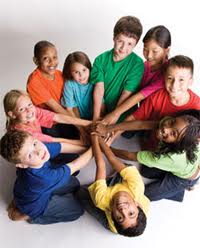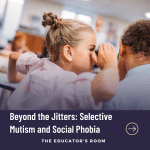 Each September we begin the process of writing the rules. I ask, “What rules do you think we need for our class?” (While my class is full of second graders this process works for any primary grade.)
Each September we begin the process of writing the rules. I ask, “What rules do you think we need for our class?” (While my class is full of second graders this process works for any primary grade.)
The hands are popcorn. Everyone is bouncing up and down with an idea. The blurters start shouting out suggestions. The student teacher sits poised at the chart, ready to record them. I wonder if she can write quickly enough:
Don’t hit
Don’t kick
Don’t slap
Don’t bite
No tattling
No stealing someone’s toy
No tripping your friends
No tripping anyone
No punching
No running in the halls
No skipping in the hall
Treat everyone nice
No jogging in the hall
No spitting
No picking your nose
No talking in class… “Ever?” I ask
The timing for this is planned carefully. Super anal seven year olds could blather for days about rules. “Oops!” I say in a startled voice, “We have to leave for Gym. We’ll work on this again tomorrow.”
The process moves on. The secret is I know there will only be three rules. I even know what the rules will be. It’s a plot. I can convince them they will write the rules. The wording will be their choice, the content mine – kind of. Like all great ideas, these are not original. These three rules will cover a multitude of sins. The trick is to get the right people to come up with the wording.
Me: Oh look! I notice a bunch of these rules are about being safe. Who can think of a rule for being safe?
I look around. Skippy, who is always on the go, is bouncing up and down.
Skippy blurts: Be Safe!
Me (wearing an astonished look on my face): What a great idea! Everyone thumbs up if you think this is a great rule. I’ll never tell that for this rule I always call on Skippy, Speedy or Twinkle Toes.
For the Golden Rule I push them towards the wording I want. Most of them have heard it. It was a rule in kindergarten and first grade. If the first suggestion is “Be nice to everyone.” I say “Good idea. Any other suggestions?” I always call on Snidely or Cruella for this rule. I will slowly and painfully pull the rule suggestion out of them.
The final rule of taking care of our things and our school is less selective but if Slobby Robby comes up with it, I think of it as a bonus. My favorite working for this rule was “Treat our school like it is the White House.” The class signs a board agreeing they will follow the rules.
Later in the year, when Skippy crashes into two first graders as he careens full speed down the hall, I remind him, “What’s that rule you wrote about safety? Can you read it to me?” When Cruella is being wicked and has three girls in tears, I cross my arms, calmly look at her and ask, “Didn’t you write that rule about how we treat people? I think your classmates deserve an apology, don’t you?”
The Golden Rule is priceless. It reminds us to be our best to others. It can be hard to understand. Even the teacher (that would be me) forgets sometimes when I am rushed, being bothered by an administrator, overtired, or when it is too stinking hot in the room to breath. The adult is the role model in a classroom. I do always admit my mistake to everyone who heard me and apologize.
Kids often have a hard time with the golden rule. I frequently hear excuses such as, “She hit me first.” Harder still is teaching a child what to do when they didn’t mean to hurt someone. I have to model that a lot. If I step on a foot as I walk through the room, I make sure I always stop and say, “Oh, I didn’t mean to do that. Are you okay?”
Treating each other like we are all humans makes it easier to remember not to laugh at mistakes. We help someone when they are down (that includes falling). We can recognize each person’s strengths. In return, we are willing to take that step out onto a limb and try something new. I cannot count the number of times I have seen students reassure a classmate. They try not to giggle even when someone makes a tremendous blooper. Their eyes bug out and their hands slap over their mouth, but the laughter is stopped. They can be immeasurably understanding to the most difficult classmate.
I am always amazed at the joy we all receive at being part of a group where we can trust each other.



